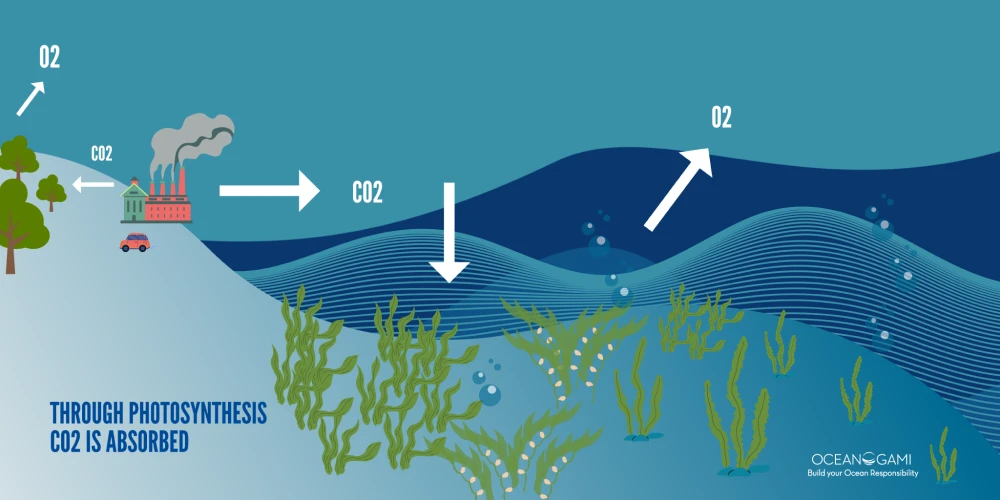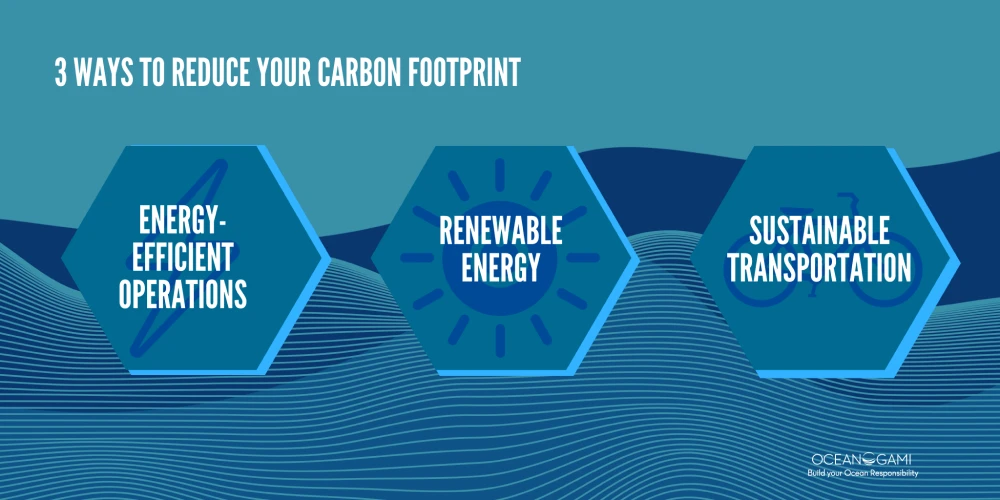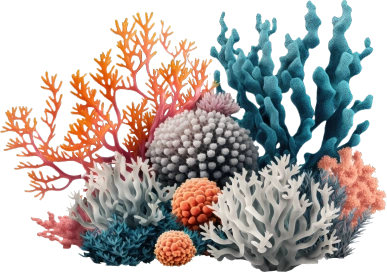The ocean is essential for survival, regulating the Earth’s climate and providing food and other resources. Coastal and marine ecosystems, such as seagrass beds, mangroves, and salt marshes, play a crucial role in regulating the carbon cycle by storing carbon in the form of “Blue Carbon”, as it’s known. These ecosystems store significant amounts of carbon and provide important ecosystem services such as coastal protection, water quality improvement, and habitat for fish and wildlife. These ecosystems cover around 49 million hectares. In this article, we will explore how businesses can reduce their carbon footprint in the ocean and protect these critical blue-carbon ecosystems.
Understanding Blue Carbon
Over the past 20 years, the term “Blue Carbon” has been used to refer to the carbon stored in ocean, marine, and coastal ecosystems. These ecosystems absorb carbon dioxide (CO2) from the atmosphere and store it in their biomass, soils, and sediments. Seagrass beds, mangroves, and salt marshes are some of the most important blue carbon ecosystems. They have extraordinary capacities to store carbon – for example, mangroves store three to five times more carbon than rainforests per hectare! (IUCN, 2016). In fact, global estimates of the total carbon stored in blue carbon ecosystems range from 10,450 to 25,070 million tonnes of carbon in the first meter of subsoil. Furthermore, some studies indicate that underwater forests, such as kelp forests, absorb a significant carbon (greater than previously thought). This ecosystem service these species offer has great ecological and economic implications since carbon sequestration produces $163/year per hectare of ecosystem, adding to the great benefits they produce in other sectors such as fishing.
The Role of Seagrass Beds

Seagrass beds are one of the most important blue carbon ecosystems, providing long-term storage of large amounts of carbon. The species Posidonia oceanica, in particular, is one of the most important blue carbon sinks in the Mediterranean (IUCN, 2021). Seagrass beds also provide important habitat for fish and other marine species. And in the case of Posidonia can also act as coastal protection, as well-developed and lush Posidonia meadows retain sediment and create natural barriers that reduce waves and protect the coastal zone. However, these ecosystems are threatened by human activities such as coastal development, pollution, and overfishing.
Protecting Blue Carbon Ecosystems
Protecting and conserving blue carbon ecosystems is essential for our health and resilience, as well as for the overall well-being of the environment and the sustainable development of local communities and economies, as millions of people around the world depend on these ecosystems. Businesses can play a critical role by reducing their carbon footprint and investing in conservation efforts.
Reducing Carbon Footprint

Businesses can reduce their carbon footprint in several ways, including:
– Energy-efficient operations: Adopting energy-efficient practices, such as using LED lighting, improving insulation, and optimizing heating and cooling systems, can significantly reduce energy consumption and associated carbon emissions.
– Renewable energy: Investing in renewable energy sources such as wind, solar, and hydropower can help businesses reduce their reliance on fossil fuels and associated carbon emissions.
– Sustainable transportation: Encouraging employees to use public transportation, bicycles, or electric vehicles can reduce carbon emissions from transportation.
Investing in Conservation
Businesses can also invest in conservation efforts to protect and conserve blue carbon ecosystems, such as:
– Supporting research: The study of blue carbon ecosystems can help identify threats, develop conservation strategies, and monitor the health and resilience of these ecosystems.
– Partnerships and collaborations: Collaborating with partners, such as environmental organizations and local communities, can help businesses identify and address environmental challenges and promote sustainable development.
– Green infrastructure: Investing in green infrastructure, such as coastal wetlands and reefs, can help protect coastal communities from extreme weather events and associated flooding while providing important habitat for fish and other marine species.
– Projects: Contribute to projects that help maintain and restore seagrass beds, as in the case of the Mediterranean, where Posidonia meadows play a fundamental role in coastal protection and carbon sequestration, and serve as a habitat for a large number of species. Many projects promote the restoration and protection of these ecosystems, such as the “Posidonia Activa” project of Anèl.lides or the “Bosque Marino” project of Red Electrica.
Conclusion
Blue carbon ecosystems are critical for our planet’s and communities’ health and resilience. Businesses can play a crucial role in protecting and conserving these ecosystems by reducing their carbon footprint and investing in conservation efforts. Businesses, scientists, and local communities can create a sustainable blue economy that benefits everyone by working together.
This is part of the new Oceanogami Ocean Corporate Series. A series that aims to give further insight into the elements and topics needed to understand the intersectionalism of businesses and organizations and environmental sustainability and the role they can play in making a positive impact in marine conservation. Stay tuned for more!

